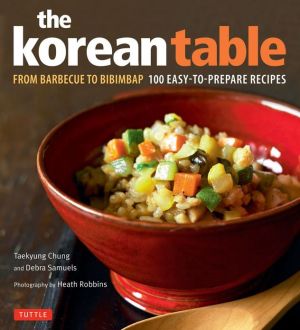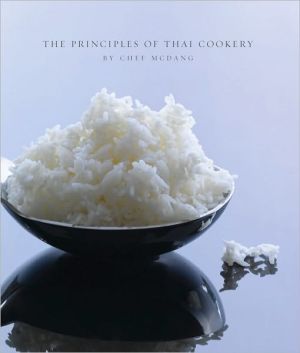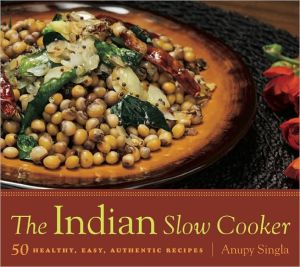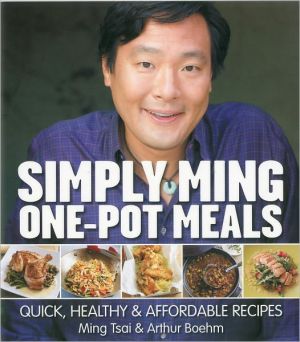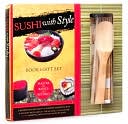Korean Table: From Barbecue to Bibimbap
Are you a fan of Thai or Japanese foods, and interested in trying something new? If so, The Korean Table is the cookbook for you! Here is a collection of recipes that are not only new, but also fresh and healthy yet robust and intensely flavored.\ Poised to become America's next favorite Asian cuisine, Korean food is rapidly gaining in popularity throughout the country. Dishes such as bulgogi (Korean barbecue), kimchi (pickled spicy cabbage) and bibimbap (mixed rice) are only a few of the...
Search in google:
Are you a fan of Thai or Japanese foods, and interested in trying something new? If so, The Korean Table is the cookbook for you! Here is a collection of recipes that are not only new, but also fresh and healthy yet robust and intensely flavored.Poised to become America's next favorite Asian cuisine, Korean food is rapidly gaining in popularity throughout the country. Dishes such as bulgogi (Korean barbecue), kimchi (pickled spicy cabbage) and bibimbap (mixed rice) are only a few of the savory, authentic meals that are taking the food world by storm.The Korean Table is a wonderful new cookbook that shows American cooks how to create the tempting flavors of Korean cuisine at home. Chung and Samuels, a Korean and an American, team up to guide home cooks through the process of making Korean meals without fuss, multiple trips to specialty markets or expensive on-line shopping. Along with showing you how to create complete Korean meals from start to finish-from Scallion Pancakes to Korean Dumplings (mandu) and Simmered Beef Short Ribs-The Korean Table also includes information about how you can add the flavors of Korea to your meal in numerous quick and easy ways every day, using condiments, side dishes, salad dressings, sauces and more. Publishers Weekly Cooking school teachers Chung and Samuels offer an alluring array of Korean recipes designed for the Western kitchen. As an added bonus, the authors delve into the history of the cuisine, including the importance of balance in taste and color, medicinal qualities of ingredients, and construction of the typical Korean family meal. They also include a lengthy section introducing the reader to common ingredients of the cuisine. The dishes, some traditional, some modernized for contemporary tastes, are what the authors call a "starter kit": the building blocks essential to Korean cooking. Staples include Kimchi Paste, Soy Scallion Dipping Sauce and a collection of homemade stocks. Because Korean meals often include a minimum of five dishes, recipes are quick and accessible. Some, such as Korean Dumplings, include handy sidebars with instructions on technique. Others, such as Asparagus Salad, Korean Hot Wings, and Stir Fried Beef with Vegetables clearly appeal to the American sense of familiarity, albeit with a Korean flair. For the more adventurous, recipes such as Roasted Corn Tea, Kimchi Soup, and Warm and Spicy Squid Salad are sure to appeal. Complete with full-color photos throughout, this collection offers a welcome and undaunting introduction into Korean cuisine. (Oct.)Copyright © Reed Business Information, a division of Reed Elsevier Inc. All rights reserved.
\ From the Publisher"A very appealing introduction to Korean cuisine, both classical and contemporary."—Library Journal\ "A welcome and undaunting introduction into Korean cuisine"—Publishers Weekly\ "Your display will not be complete without copies of The Korean Table, From Barbecue to Bibimbap (Tuttle Publishing; $27.95; Available Now), a new collection of recipes that are new, fresh, healthy and full of flavor."—Gourmet Retailer\ "Samuels appreciates Korean cuisine especially for its "enormously healthy and vegetable-heavy" qualities, so much so that she and her longtime friend Taekyung Chung have just published "The Korean Table," a 100 -recipe collection of what she calls "starter" recipes."—Washington Post\ \ \ \ \ \ Publishers WeeklyCooking school teachers Chung and Samuels offer an alluring array of Korean recipes designed for the Western kitchen. As an added bonus, the authors delve into the history of the cuisine, including the importance of balance in taste and color, medicinal qualities of ingredients, and construction of the typical Korean family meal. They also include a lengthy section introducing the reader to common ingredients of the cuisine. The dishes, some traditional, some modernized for contemporary tastes, are what the authors call a "starter kit": the building blocks essential to Korean cooking. Staples include Kimchi Paste, Soy Scallion Dipping Sauce and a collection of homemade stocks. Because Korean meals often include a minimum of five dishes, recipes are quick and accessible. Some, such as Korean Dumplings, include handy sidebars with instructions on technique. Others, such as Asparagus Salad, Korean Hot Wings, and Stir Fried Beef with Vegetables clearly appeal to the American sense of familiarity, albeit with a Korean flair. For the more adventurous, recipes such as Roasted Corn Tea, Kimchi Soup, and Warm and Spicy Squid Salad are sure to appeal. Complete with full-color photos throughout, this collection offers a welcome and undaunting introduction into Korean cuisine. (Oct.)\ Copyright © Reed Business Information, a division of Reed Elsevier Inc. All rights reserved.\ \ \ Library JournalChung, a Korean cooking teacher and author now based in Tokyo, and Samuels, a cooking teacher from Boston who has lived in Japan off and on for years, have written a very appealing introduction to Korean cuisine, both classical and contemporary. Following a brief introduction, they present an illustrated guide to ingredients and a "starter kit" of chile pastes, condiments, and other basics to keep on hand. The recipes, from Seafood and Green Onion Pancakes to Pork Ribs with Fresh Ginger, are clearly written and unintimidating, and most are shown in color photographs (including step by steps of techniques). Korean food is becoming increasingly popular here, and there are relatively few books on the topic. For most collections.\ \ —Judith Sutton\ \
